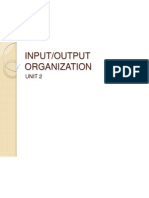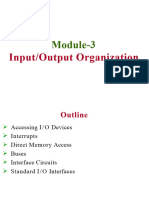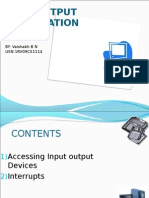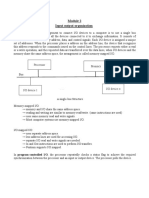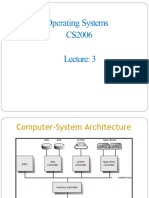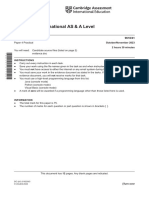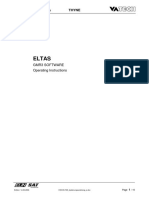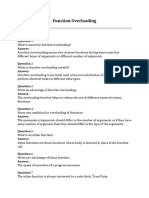0% found this document useful (0 votes)
15 views32 pagesCOA Input Output
The document explains how I/O devices are accessed by processors through a bus system, detailing memory-mapped I/O and the use of unique addresses for each device. It discusses synchronization mechanisms such as interrupts and Direct Memory Access (DMA) for efficient data transfer between devices and memory. Additionally, it covers the handling of multiple devices, prioritization of interrupts, and the role of DMA controllers in facilitating data transfers without continuous processor intervention.
Uploaded by
Sohit ChauhanCopyright
© © All Rights Reserved
We take content rights seriously. If you suspect this is your content, claim it here.
Available Formats
Download as PDF, TXT or read online on Scribd
0% found this document useful (0 votes)
15 views32 pagesCOA Input Output
The document explains how I/O devices are accessed by processors through a bus system, detailing memory-mapped I/O and the use of unique addresses for each device. It discusses synchronization mechanisms such as interrupts and Direct Memory Access (DMA) for efficient data transfer between devices and memory. Additionally, it covers the handling of multiple devices, prioritization of interrupts, and the role of DMA controllers in facilitating data transfers without continuous processor intervention.
Uploaded by
Sohit ChauhanCopyright
© © All Rights Reserved
We take content rights seriously. If you suspect this is your content, claim it here.
Available Formats
Download as PDF, TXT or read online on Scribd
/ 32




